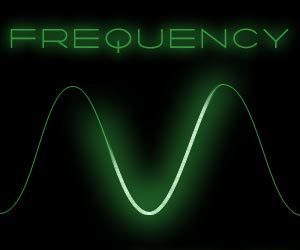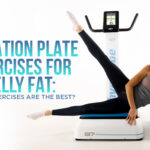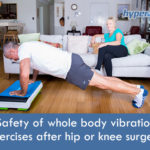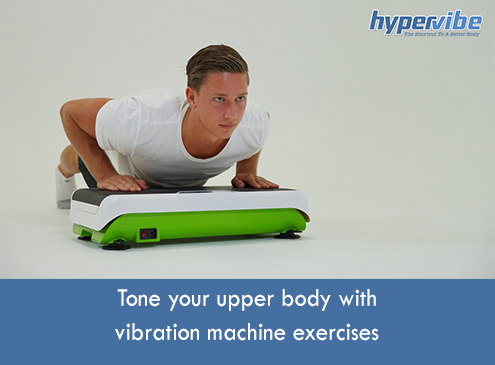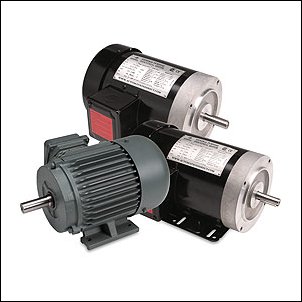Which Frequency Delivers the Best Whole Body Vibration?
Written by:
Dewald, Published on: 08/07/2013
Various theories exist to answer this question. As you will learn, the short answer is that first it depends on your exercise goal; are you trying to relieve tight back muscles, tone up your arms or strengthen your legs? Secondly it depends on your body; are you heavy or light, young or old, trained or untrained? All of these factors influence what is the perfect frequency for you personally.
In any case the underlying goal is to get the vibration machine activating your muscles and stimulating your connective tissues. There is a specific range of vibration frequencies that should safely generate the maximum amount of muscle activation and there’s a good chance the perfect frequency for your exercise goal and your body type exists somewhere in or below that range.
Before we reveal what that range is, let us review ‘how’ this muscle activation comes about.
How Whole Body Vibration Activates Muscles
A vibration platform repeatedly lifts you up, then drops you down. Those two actions cause movement of your joints and stretching of your muscles. These actions result in physiological effects that include an increase in gravitational loading of the spine, vibration of the muscles and the activation of one or more reflexes. Vibration frequency helps determine the intensity of those physiological responses.
The Stretch Reflex
The Stretch Reflex is one of a number of reflexes that assist in the smooth movement of your body and help protect it from sudden or unexpected movements. It is activated by stretching muscles along with a special organ inside them called a Spindle. The Spindle responds to stretch by sending electrical impulses along nerves to the spinal cord then back down the same limb to the muscle causing it to contract.
This stretch response is known to occur in Whole Body Vibration at frequencies as low as 6Hz (1).
Muscle Resonance
You might recall seeing an image of a female opera singer shattering widows with her voice as she bellows out a high pitch note. Although this is just an old wives tale, the principals behind it are legitimate. All physical objects have a natural frequency at which they resonate, and when a physical object is vibrated at the same frequency as its natural resonance frequency, it causes the object being vibrated to resonate with much larger magnitudes.
It has been shown that different parts of the body have a natural frequency at which they resonate, and that the natural frequencies of the soft tissues in the lower extremity range between 10 and 50 Hz (2). Scientists have shown that when the vibration from a Whole Body Vibration platform is set at the same frequency as the natural resonance frequency of a muscle, this is the frequency which will cause maximum muscle activation (3).
What Is The Maximum Frequency That Can Be Used For Stimulating Muscle Activity With Whole Body Vibration?
It has been shown experimentally that muscle Spindles can respond to vibration applied directly to a muscle tendon with frequencies up to 100Hz. This type of direct vibration causes 100 tiny muscle stretches per second and the spindle will respond to each of the 100 stretches (4). They also showed that the muscle twitched in response to each brief burst from the Spindle meaning muscles can also be activated up to 100 times a second.
It is also known that the strength of the muscle contraction depends on the number of electrical signals it receives from the brain (voluntary contraction) and/or the Spindle (reflex contraction).
Does this mean that the highest possible Whole Body Vibration frequency will also produce the most muscle activity? The answer is “No” More is only better up to a point.
Vibration Transmission
If you try it yourself or ask anyone who has been on a Whole Body Vibration machine at 30Hz then increased the frequency to 50Hz it is commonly reported that the muscle activity became substantially reduced at 50Hz. It almost feels as if the machine was suddenly turned off.
Finnish researchers (5) may have an explanation for this. They tested whole body vibration frequencies ranging from 10 – 90Hz to see how much G-force would be delievered to the ankle, knee, hip and spine. What they found was that the higher the frequency went, the more the vibration was dampened as you travel up the body from the feet towards the spine. They found maximum accelerations could occur for:
- The ankle at up to 40Hz
- The knee at up to 25Hz
- The hip at up to 20Hz
- The spine at up to 10Hz
They found that exceeding a frequency of 40Hz “the transmitted vibration power declined by a factor of 10 to 1000” meaning, the movement in those body parts is reduced up to 1000 times at very high frequencies.
The body weight of a person can also influence how well the vibration is transmitted through their body. In effect, heavier persons have a firmer contact with the platform at all frequencies. However in 2010, recommendations from the International Society of Musculoskeletal and Neuronal Interactions (6) made mention of what they refer to as “skidding”, where the vibration settings become too high and essentially cause the user to skid on the platform.
This can happen at lower frequencies if the person on the machine is very lightweight, you will know it is happening if your feet start sliding around the platform. For example, watch children on a Whole Body Vibration machine and even at frequencies below 30Hz they start sliding around on the platform. Their body is not heavy enough to keep them in firm contact with the platform when it is moving very fast.
Another issue with higher vibration settings is that the platform can move so fast that the feet no longer have time to drop down before the platform comes back up again. Like a Hummingbird’s wings; they’re moving so fast they actually appear to be motionless. The same could be happening with your feet if the vibration platform is moving too fast – if they no longer move up and down, your muscles are no longer getting stretched.
What Is The Best Frequency Range For Stimulating Muscle Activity With Whole Body Vibration?
Whilst setting an optimal vibration frequency appears to be highly individualized, one thing is very clear, scientists commonly choose frequencies of between 20-45Hz in their research. A review of Whole Body Vibration research by veteran researcher Jorn Rittweger (7) revealed that all studies showing positive muscle training effects used frequencies of 20-45Hz.
Clues to why scientists keep choosing to use frequencies in that range come from another of Rittweger’s papers (8) where he states:
“From the experience in our laboratory and by reports from other colleagues, a vibration frequency below 20Hz induces muscular relaxation (we have successfully applied 18 Hz vibration exercise in patients with chronic lower back pain), whereas there are reports that at frequencies above 50Hz severe muscle soreness and even haematoma may emerge in untrained subjects.”
When Less Muscle Activity Is Better
If your goal is to relieve tight muscles or assist with recovery from a tough workout, then causing the already over-tight muscles to tighten with maximum intensity is probably not going to help.
At frequencies below 20Hz, particularly if the amplitude is fairly low you are alternating between minimum continuous tension to moderate continuous tension. This rhythmic pulsing not only stimulates blood flow which aids in detoxifying the muscles and supplying more nutrients it also stimulates the part of your nervous system that is active when you fall asleep. You can help this soothing effect with deep slow breathing and if it is safe to do so, closing your eyes.
Summary
In conclusion, higher vibration frequencies will generate more muscle activity, but only to the point where the vibration is being transmitted effectively. Higher vibration frequencies combined with higher vibration amplitudes will generate maximum muscle activity. There appears to be good reasons to limit vibration frequencies to less than 50Hz and frequencies below 20Hz can be used for relieving tight sore muscles and helping with recovery.
References:
(1) Cochrane DJ, Loram ID, Stannard SR, Rittweger J. Changes in joint angle, muscle-tendon complex length, muscle contractile tissue displacement and modulation of EMG activity during acute Whole Body Vibration. Muscle Nerve. 2009 Sep;40(3):420-9.
(2) Wakeling, J.M., Nigg, B.M., 2001a. Modification of soft tissue vibrations in the leg by muscular activity. Journal of Applied Physiology 90, 412–420.
(3) Fratini A, La Gatta A, Bifulco P, Romano M, Cesarelli M. Muscle motion and EMG activity in vibration treatment. Med Eng Phys. 2009 Nov;31(9):1166-72.
(4) Fornari MC, Kohn AF. High frequency tendon reflexes in the human soleus muscle. Neurosci Lett. 2008 Aug 1;440(2):193-6.
(5) Kiiski J., Transmission of Vertical Whole Body Vibration to the Human Body. J Bone Miner Res. 2008 Aug;23(8):1318-25.
(6) Rauch F, Sievanen H, Boonen S, Cardinale M, Degens H, Felsenberg D, Roth J, Schoenau E, Verschueren S, Rittweger J. Reporting whole-body vibration intervention studies: recommendations of the International Society of Musculoskeletal and Neuronal Interactions. J Musculoskelet Neuronal Interact. 2010 Sep;10(3):193-8.
(7) Rittweger J. Vibration as an exercise modality: how it may work, and what its potential might be. Eur J Appl Physiol. 2010 Mar;108(5):877-904.
(8) Rittweger J, Mutschelknauss M, Felsenberg D. Acute changes in neuromuscular excitability after exhaustive whole body vibration exercise as compared to exhaustion by squatting exercise. Clin Physiol Funct Imaging. 2003 Mar;23(2):81-6.
